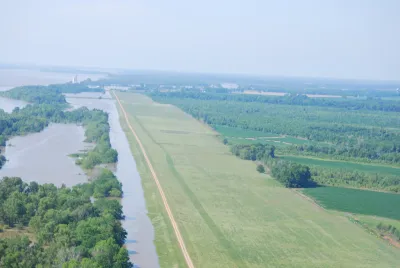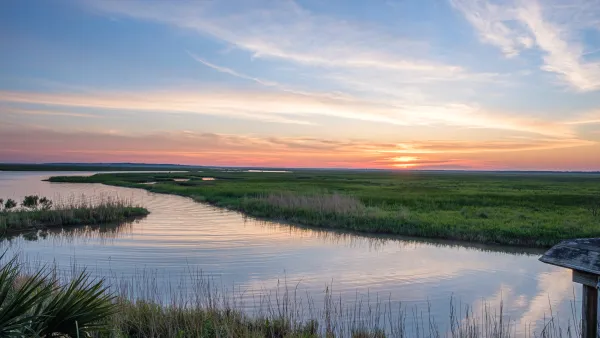A $50 billion plan to replenish lost coastal land could have significant impacts on local marine life and fishing industries.

The U.S. Army Corps of Engineers has released the environmental impact statement that allows a key component of a massive coastal restoration project planned for the Louisiana coast to move forward. Writing in the New York Times, John Schwartz reports that the Corps called the proposed project largely beneficial but expressed concern for the effects it could have on marine life.
The Mid-Barataria Sediment Diversion project is designed to replenish the sediment that has eroded away from Louisiana's coast, sediment that was naturally replenished before man-made levees contained the flow of the river. "If the corps issues final permits, which could happen as early as next year, a $1.4 billion structure will be dug into the western bank of the river below New Orleans. It will include gates that allow operators to control the flow of water and sediment from the mighty river into Barataria Bay, nearly an Olympic swimming pool’s worth of water every second."
To counter negative impacts, the project sets aside "millions of dollars to monitor dolphin populations and protect them, as well as helping to pay to relocate oyster beds to areas that will have the right level of salinity" and fund boat upgrades to help fishermen reach waters farther ashore. Acknowledging the dangers as well as the necessity of the project, Richie Blink, a council member of the Plaquemines Parish government, emphasized the importance of a safety net for "the people who are impacted most by the structure and the project." Opponents argue there are less destructive ways to stave off the effects of erosion, but those methods are more expensive and require more maintenance. Without the project, said Bren Haase, executive director of the state coastal authority, "the alternative is unthinkable. It’s a coastal Louisiana that doesn’t exist."
FULL STORY: Big Step Forward for $50 Billion Plan to Save Louisiana Coast

Analysis: Cybertruck Fatality Rate Far Exceeds That of Ford Pinto
The Tesla Cybertruck was recalled seven times last year.

National Parks Layoffs Will Cause Communities to Lose Billions
Thousands of essential park workers were laid off this week, just before the busy spring break season.

Retro-silient?: America’s First “Eco-burb,” The Woodlands Turns 50
A master-planned community north of Houston offers lessons on green infrastructure and resilient design, but falls short of its founder’s lofty affordability and walkability goals.

Test News Post 1
This is a summary

Analysis: Cybertruck Fatality Rate Far Exceeds That of Ford Pinto
The Tesla Cybertruck was recalled seven times last year.

Test News Headline 46
Test for the image on the front page.
Urban Design for Planners 1: Software Tools
This six-course series explores essential urban design concepts using open source software and equips planners with the tools they need to participate fully in the urban design process.
Planning for Universal Design
Learn the tools for implementing Universal Design in planning regulations.
EMC Planning Group, Inc.
Planetizen
Planetizen
Mpact (formerly Rail~Volution)
Great Falls Development Authority, Inc.
HUDs Office of Policy Development and Research
NYU Wagner Graduate School of Public Service


























